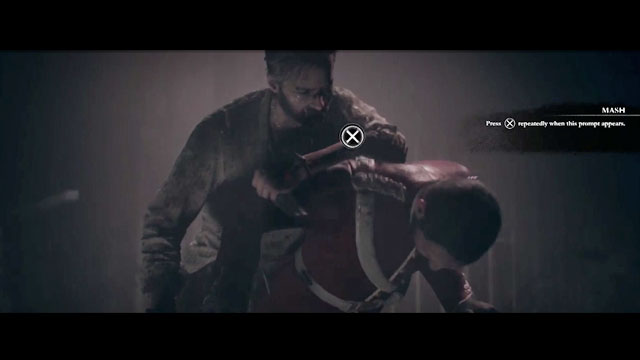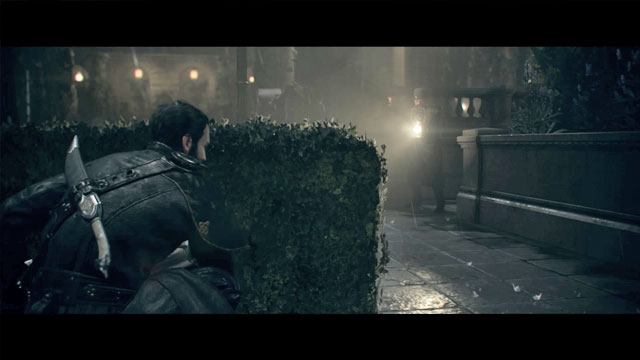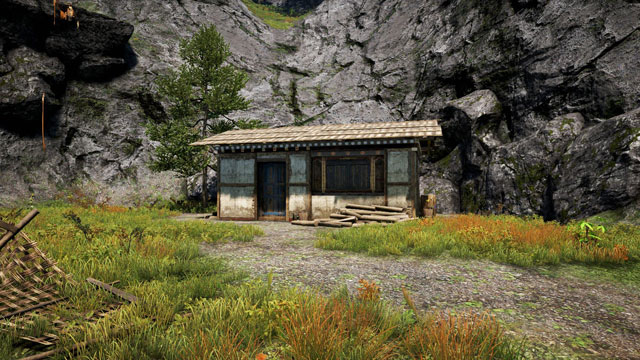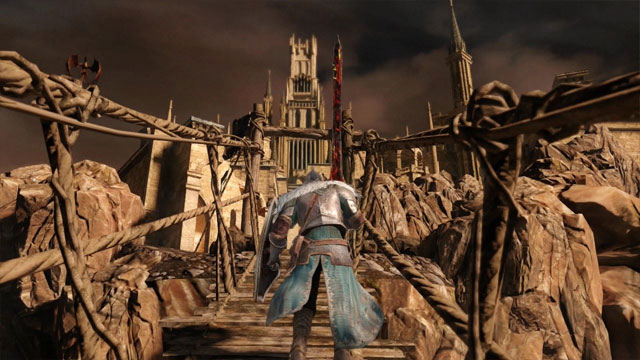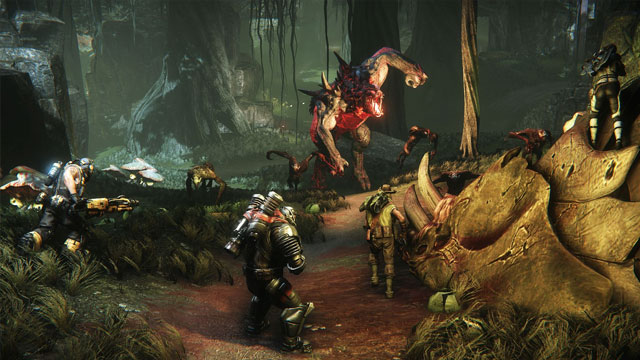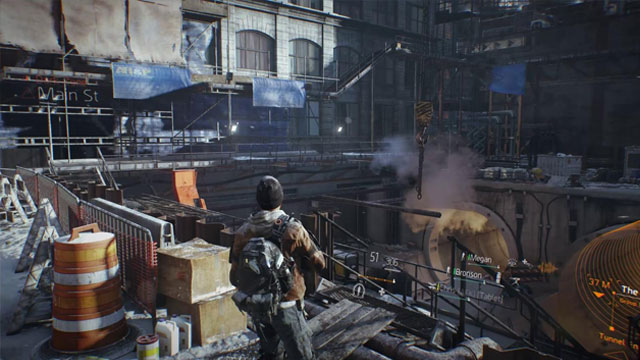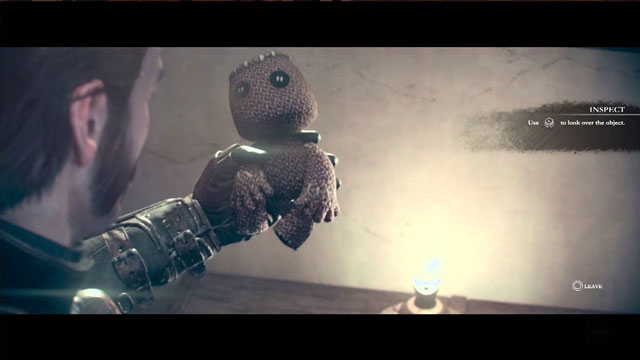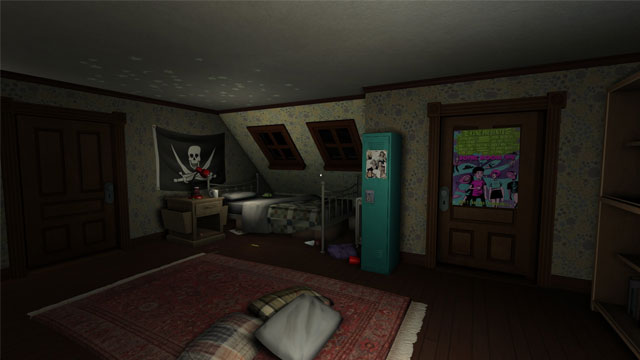Gaming Trends That Should Be Game Over
We’re in the middle of a generation cycle and if it’s understandable that the latest consoles’ power hasn’t been fully mastered, it’s quite astounding that neither the PS4 nor the Xbox One has a game that can be argued to be the killer application for the system. After looking at the last couple of years, it seems like some unfortunate trends are taking a hold in the gaming landscape and are on the brink of becoming accepted practices when they provide substandard experiences.
Here is a list of some of these unwelcome trends; if some of them can legitimately be excused, none of them should get a continue and all should be game over.
Meaningless QTEs
Worst Offenders: The Order 1886, Call of Duty: Advanced Warfare
Quick Time Events of QTEs are one of the most despised gameplay mechanics. These negative feelings don’t come from the mechanic itself, but from the way some developers are using QTEs to replace or give the illusion of gameplay which make them feel more like a cheap shortcut and less as a meaningful gameplay mechanic.
This is not to say that all QTEs are bad, studios like Quantic Dream and Telltale Games have developed entire games where QTEs are the quintessential gameplay mechanic; however, these studios utilizes QTEs to create emotional bonds and every one of them has an impact on the storytelling which is still too rare.
This specific screen in The Order: 1886 illustrates QTEs at their worst: there is no fail state here; as long as you do not press the button asked, nothing happens; the animation is endlessly looped; that literally makes it less interactive than a DVD menu.
In Call of Duty: Advanced Warfare, this a button prompt that sole purpose is to move the game forward; the player can move around but the game doesn’t; nothing break the immersion as much as a meaningless button prompt.
QTEs can be a compelling: in Telltale’s The Walking Dead, the player has to decide quickly and every decision impacts the narration later on; this gives the sense and meaning to using QTEs as a gameplay mechanic.
Insta-fail Missions
Worst Offenders: Splinter Cell: Blacklist, The Order 1886
No one likes insta-fails! This is lazy game making; the fun of a video game is finding a unique and personal way to resolve a situation; insta-fails is the opposite; it’s forcing a player to solve a situation in one way and punishing any attempt to experiment.
This is very pre-dominant in stealth games and unsurprisingly the most popular stealth games are the ones letting the player deal with the consequences of being spotted. People enjoy stealth games for different reasons; some like the challenge of being ghosts, the others enjoy even more what happen when a wrench is thrown in their master plan and they have to improvise on the spot.
Insta-fails are the best way to exclude potential gamers who would enjoy the game tremendously if it wasn’t for that.
In Splinter Cell: Blacklist, there are 3 distinct ways to play the game represented by 3 skill trees; people inclined to a certain playstyle will invest in the complimentary skill tree; therefore when encountering stealth only missions, the gamers the least adept to that play style are being punished twice as not only they are forced into a style that isn’t there and who don’t have the advantages coming from investing in the stealth skill tree.
The only thing worse than a insta-fail missions, are insta-fail stealth missions in a game with very poor detection mechanisms. In this case, The Order: 1886 is probably one of the worst examples: interspersed between QTEs sequences are force stealth segments in which the non-playable opponents have a super human vision while you have no helpful cues on your hiding status.
Pointless Side Quests
Worst Offenders: Watch Dogs, Far Cry 4
Some developers are aware of the amount of content gamers expect and packing a game with things to do: activities, collectibles, side and radiant quests are an easy way to make it seems like there is a lot to do; unfortunately, especially in open-world games, a lot of the stuff to do is just meaningless and more of a choir to do for completionists than a meaningful and rewarding accomplishment.
A parallel can be drown between Watch Dogs and real life: many side quests the players invest themselves in will end with a phone or text message; in a weird way, this the video game equivalent of a breaking up via sms. It feels wrong when there is no satisfying conclusion.
Behold the glory of the end of the Kyrat Fashion Week; one of the biggest side quests in Far Cry 4 ends up with a closed door. It’s a complete let down for an interesting journey. As much as the several missions are fun; without a pay off, something is missing.
At the opposite of the spectrum, in South Park: The Stick Of Truth, every single side quests culminates in an enthralling finale: the ManBearPig quest line for example, ends with the new kid and his friend fighting former vice president Al Gore himself.
One-Trick Ponies
Worst Offenders: Dark Souls, StarWars: Battlefront
This is the least harmful trend of the list; a certain number of games, some of them quite technically proficient, have resorted to rely on one marketing gimmick and sadly pour all their efforts in fostering that one-trick instead working out its shortcomings.
Some games make sure they look and sound like the franchise they are based of while letting down the amount or variety of content or the game; others will dedicate more time in offering a difficult challenge instead of improving the game’s storytelling.
The marketing is strong with Dark Souls; heralded as the games for hardcore gamers, the series still relies on difficulty as a sales gimmick which begs the question: could FromSoftware balance several difficulty levels or are they masquerading an unbalanced game as something it’s not.
With an anemic map list and the lack of space combat, StarWars: Battlefront epitomizes the games which entire sales is based on a single element: StarWars. The game has very little to offer compared to games in the same genre; it’s only selling point is the franchise name.
Barebone Multiplayer-Only AAA Releases
Worst Offenders: Titanfall, Evolve, Rainbow Six: Siege
Barebone multiplayer-only AAA games is probably the saddest trend on this list: most of these games are good and a lot of fun; this should not be ignored; however, the major problem with these games is that the amount of content these games offer is so limited that their dedicated communities die out rather quickly which drastically reduces the lifespan of these games.
When a game is released with less than a dozen map and that not all modes work on all the maps, by the time the first map pack DLC comes out, free or not, the number of people playing has already dwindled down to an anemic number.
As much as developers of multiplayer-focused shooters claim people don’t play the campaigns; gamers are not ready to pay the same or more for less content; therefore, to compensate for the lack of single player campaign, things like more maps, more modes, bots, are expected; especially when many of the best Free-To-Play shooters like WarFrame offer the same amount if not more content at no cost at all.
The first big Xbox One exclusive, turned out to be a fantastic shooter with barely any content; Titanfall was supposed to be a system seller but when a game cannot justify its own price tag, it cannot warrant the purchase of a system. The game had a facsimile of a campaign and a limited number of maps that made matches repetitive.
Multiplayer-only games are very dependent upon the prosperity of their community; Evolve‘s 4 against 1 concept highlighted how quickly the effects of the lack of content can kill a game: as a result of bad marketing people in a matter of weeks got around the content offered, stopped playing and never looked back.
The worst offender in this category is definitely Rainbow Six: Siege; despite a strong gameplay; the volume of the game’s content is abysmal compared to Rainbow Six: Vegas; the latest iteration has less than half the content of its predecessors. To top it all; the multiplayer-only game locks PVP behinds mandatory PVE tutorials.
Tedious Bullet Sponges
Worst Offenders: Destiny, The Division
There’s nothing wrong the shooter MMO genre; however, in order to give the impression that these games have as much content as RPG MMO, most of the developers are increasing the health and armor of their bullet sponges to artificially inflate the lifespan of their creations.
The only effect this has on the games is to remove any fun out of it and making them tedious; which when it comes to video games isn’t a word you really want to be associated with.
The first big AAA shooter MMO was Destiny; despite its tumultuous development, the very competent shooter is a blast when you start with it but, due to its lack of quests, repeating raids and strikes at higher difficulty is the only thing to do, and except for sponginess the strikes are identical.
The long awaited The Division is a very beautiful and interesting game but the lack of interesting loot mixed with the grind of never ending shootouts with overpowered bullet sponges is just a detriment to what could have been a great game to spend time with.
Low Value Packages
Worst Offender: The Order 1886, every single barebone multiplayer-only AAA release and most walking simulators
The gaming press and most game critics have a hard time talking about the value of a game and most of the time hide behind the price of a game being a distraction when it comes to judging a game on its qualities, it’s very easy to make such a statement when the games are provided to you at no cost; the reality of the gamer is that games are not free and there’s a cost attached to it.
In order to be a feature film, a movie has to have a certain length; that is why cost is not relevant when judging motion pictures; however, if movie ticket prices would depend on director or actor’s name and have a different price based on the intellectual property, movie lovers would think twice before going to see the Batman VS. Superman for $60 or Deadpool $20.
There has been so many games released in the last couple of years with absolutely abysmal value: from single player focused games with extremely short campaigns to multiplayer-only games with a handful of maps and game modes; this is one of the worst trends in this list as for every low value game purchased a much better game with a higher value isn’t.
It is hard to justify the price tag of The Order: 1886. With a campaign clocking under 6 hours and including less than 3 hours of gameplay, as gorgeous as the graphics are, the PlayStation exclusive is nothing more than an overpriced tech demo. There’s just not enough here as far as gameplay quality and quantity to justify full price.
It is fair to make the comparison between a game and the industry standard of the genre; in this case The Last Of Us is what every linear third-person shooter should try to match; on top of a very cinematic and lengthy campaign, a very engaging and robust multiplayer component is part of the game.
For a third of the cost of The Order, State of Decay offers hours of compelling and engaging gameplay; the open-world zombie survival game has many deep gameplay systems from RPG elements to relationship management and base building. The value of this package is on par with what is expected from major AAA titles.
Walking Simulators
Worst Offenders: Gone Home, Sunset, Firewatch
Lately there hasn’t been a day without the release of a new walking simulator; if a few of them are very interesting game such as The Vanishing of Ethan Carter and Amnesia: The Dark Descent, most are just lazy and uninspired. And this is where walking simulators become atrocious: most of them have no other gameplay mechanic than walking and most, as the narrative is always straight forward, are short, incredibly short, and have no replay value whatsoever.
The acclaimed Gone Home is the prime example of what’s wrong with walking simulators and the disconnect between gamers and the gaming press: where the game reviewers see a courageous coming of age tale lays a two hour long walking simulator with poor storytelling supplemented by sub-par graphics.
Another example of lazy game design is the commercial failure known as Sunset; an unsuccessful attempt from entitled second-rate game designers to make a quick buck with a game where the player is trapped in an apartment with nothing to do while things are happening on the outside.
Misleading Editions and Season Passes
Worst Offender: Evolve
We’re living in an age where players are expecting publishers to try to push DLC and Season Passes; however, the practice has been so out of control with content creators trying to nickel and dime gamers anyway they can that some completely incomprehensible packages have started popping up: from deluxe or gold editions to limited editions, some including season passes, others only including part of the DLC included in season passes but not the entirety of it; it’s become incredibly difficult to know what content people are getting with their purchases.
Most game out there only have a single season pass; so when Evolve announced its season pass, the natural assumption would be that the season pass would include all the non-cosmetic DLC available post release. Unfortunately there was 2 different season passes for the game as well as a Monster pack which was in its own right a third season pass.
When it comes to misleading editions, again Evolve is the worst offender: between the regular, the day 1, the deluxe, the collector and the Monster Race editions; purchasing the game and knowing which content was included with what edition became a chore. For example: the Monster Race edition included the game’s two season passes but excluded the Monster Pack.
There’s nothing wrong with season passes; some include a tremendous amount of content and increase the lifespan of a game dramatically. Borderlands 2 as an example was very straight forward with what content could be expected from its season pass (the 4 expansions and the level cap increase) and what content would not be included (extra characters).
Unplayable on Release Day
Worst Offenders: Halo Master Chief Collection, Assassin’s Creed: Unity
In the last few years, we’ve seen countless games coming out in unacceptable state. One of the greatest benefits of connected consoles is the ability to have the games patched post-release; unfortunately what should be a convenience to fix issues not found during quality control as become an excuse to release unfinished and broken games during key sales periods.
If it’s understandable that games with a grand scope like Fallout and Grand Theft Auto, open world extravaganzas, might have a significant number of small bugs; none of them has ever shipped in the state of some of the releases we’ve seen lately. When the size of patches is superior to the size of the game itself; something is definitely wrong.
To be playable the Halo Master Chief Collection required a 50GB patch; that’s a full Blu Ray disc. To add insult to injury, the patch didn’t even fix the matchmaking issues.
The amount of game breaking bugs featured in Assassin’s Creed: Unity was so massive that it took several months and a dozen patches for Ubisoft to fix their game.
Why Microtransactions Aren’t on this List
To put it simply: as much as microtransactions can be a nuisance, at this time, there really aren’t that obtrusive to the AAA experience and have an impact on game developers that is non-negligible.
The are three kinds of prominent microtransactions in AAA games; the first one is the cosmetic one and its implementation has allowed studios to keep the staff of their creative department during the development cycle time where their work isn’t needed; instead of laying off people the studios make them work on alternate skins; paying the staff implies cost, so it’s understandable that these skins come at a cost.
Microtransactions aren’t mandatory; if having a Hello Kitty skin for you gun means that much to you then buy it.
The second kind of microtransactions pervasive in AAA games is time savers; again there is no obligation to buy such a thing; if someone wants to buy them for any reason; so be it; it doesn’t matter, you do not have to.
It’s completely understandable that someone with a job and a family cannot dedicate a huge amount of time unlocking things, which, to begin with, are locked to extend the lifespan of the game.
The last kind is another time saving measure where microtransactions are used to purchase in-game currency with real money to buy randomized packs, as these packs can be purchased buy playing the game; there’s no reason for anyone who doesn’t want to spend real money to purchase them.

